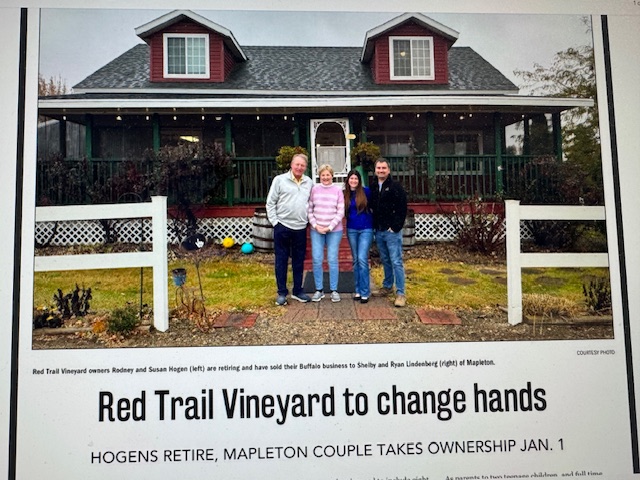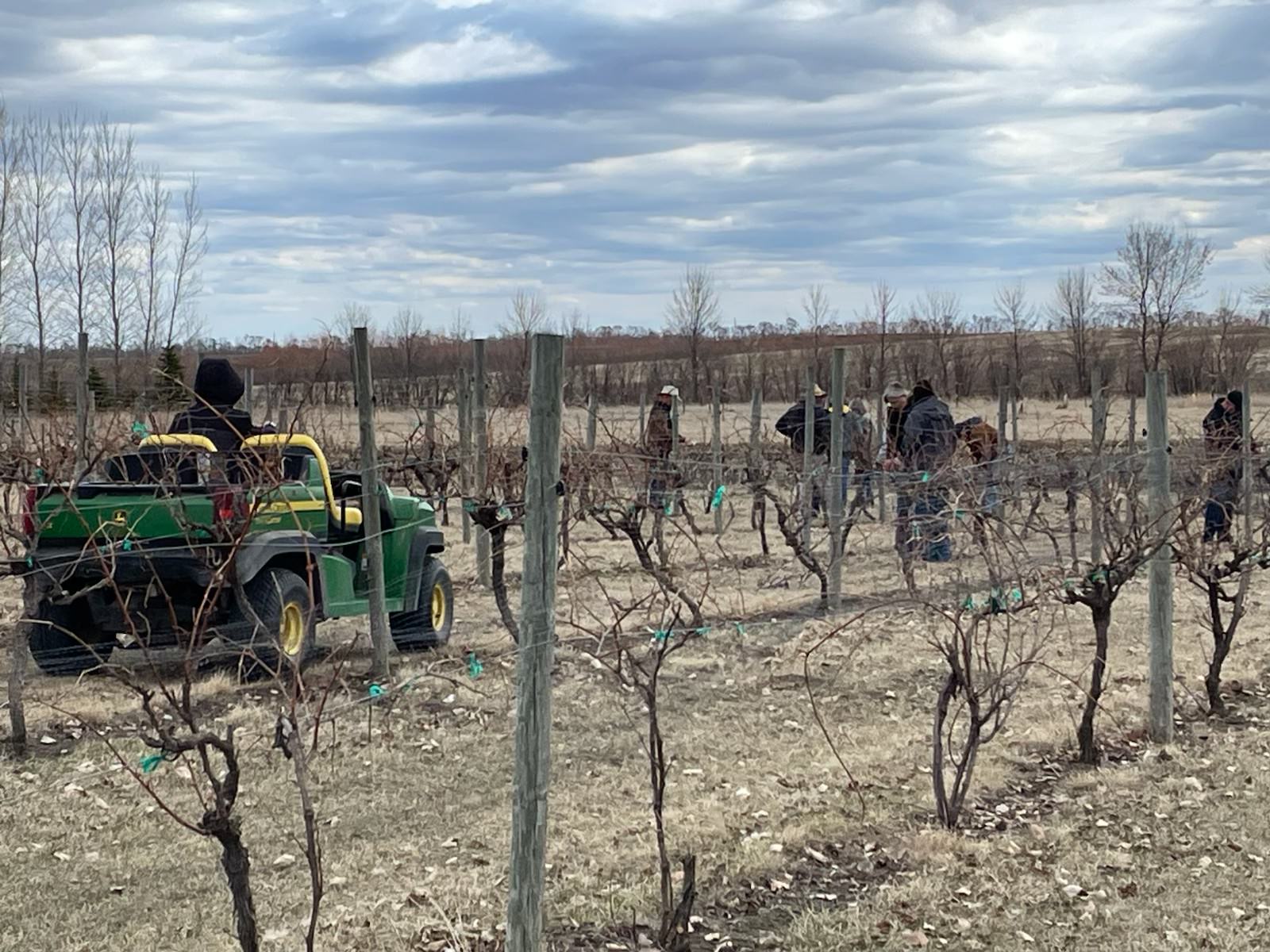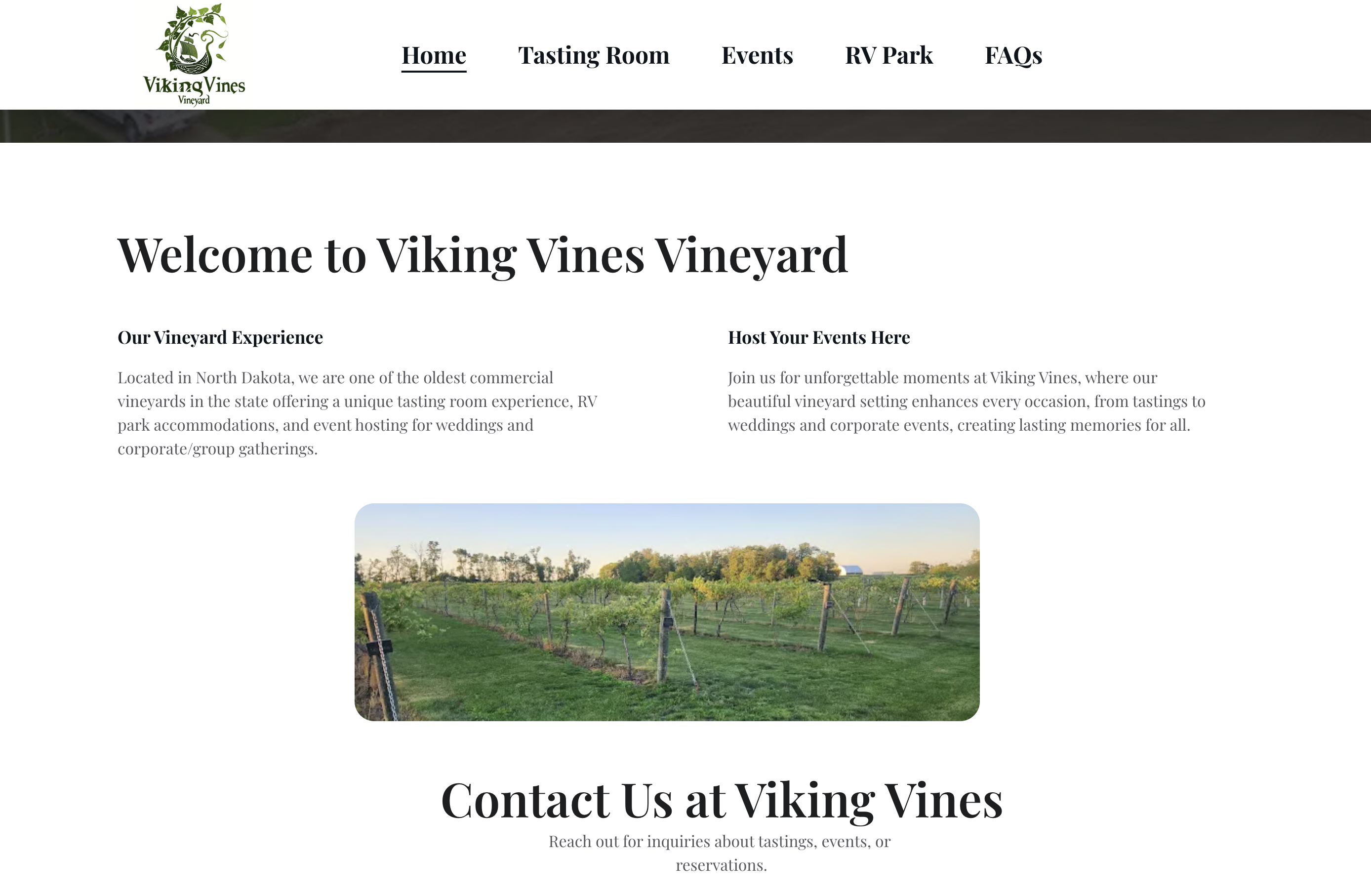Winery Business Calculator: Profit & Financial Projections
This winery business calculator helps you project profits, costs, and return on investment for your winery business by analyzing revenue streams, operational expenses, and initial investment. Find out if your winery will turn a profit below.
General Business Parameters
These parameters establish the basic operating scale of your winery. The standard industry packaging is 12 bottles per case, but you can adjust this if using different packaging formats.
Revenue Streams
| Revenue Source | Annual Revenue ($) | Actions |
|---|---|---|
$ | ||
$ | ||
$ | ||
$ | ||
$ | ||
| Total Annual Revenue | $95000.00 |
Cost of Goods Sold (COGS)
Grapes
Bottling Costs
Estimated Bottling Cost: $24000.00
Additional COGS
Total COGS
$54000.00Cost of Goods Sold (COGS) includes all direct costs associated with producing your wine. This typically includes grapes, winemaking supplies, barrels, bottling materials, and any other costs directly tied to production.
Operating Expenses
| Expense Type | Annual Amount ($) | Actions |
|---|---|---|
$ | ||
$ | ||
$ | ||
$ | ||
$ | ||
$ | ||
$ | ||
| Total Operating Expenses | $20000.00 |
Annual Loan Payment
Total Annual Expenses
$32000.00Operating expenses include all ongoing costs not directly tied to wine production. These typically include labor, marketing, facilities, insurance, and administrative costs.
Startup Costs (One-Time)
| Cost Type | Amount ($) | Actions |
|---|---|---|
$ | ||
$ | ||
$ | ||
$ | ||
$ | ||
| Total Startup Costs | $15000.00 |
Valley View Winery Financial Projections
Profit & Loss Statement
| Total Revenue | $0 |
| Cost of Goods Sold (COGS) | ($0) |
| Gross Profit | $0 |
| Gross Margin | 0.00% |
| Operating Expenses | ($0) |
| Net Operating Income | $0 |
| Loan Payment | ($0) |
| Net Income | $0 |
| Net Profit Margin | 0.00% |
This profit and loss statement represents a projected annual view of your winery's financial performance based on the inputs provided.
Key Financial Metrics
Gross Margin
0.0%
Low for wine industry
Net Profit Margin
0.0%
Average
Startup Investment
$0
One-time initial investment
Payback Period
Not profitable with current inputs. Adjust revenue or expenses to achieve profitability.
For wineries, a gross margin of 65-70% is considered good, with a net profit margin of 7-15% being successful. Payback periods vary widely but typically range from 3-7 years for most wineries.
Break-Even Analysis
Not Profitable With Current Plan
With the current inputs, this business plan is not profitable. Monthly expenses exceed monthly revenue, meaning the business cannot break even regardless of time.
Consider adjusting your plan by:
- Increasing wine prices
- Increasing sales volume
- Adding higher-margin revenue streams
- Reducing costs of production
- Reducing operating expenses
The break-even point occurs when your winery's cumulative revenue equals your initial investment plus accumulated expenses. At this point, your business begins generating profit.
Financial Visualizations
Revenue Breakdown
Revenue Sources
Expense Breakdown
Expense Categories
5-Year Financial Projections
* Projections assume 5% annual revenue growth and 3% annual expense growth
These visualizations show the distribution of your revenue sources and operating expenses, as well as a 5-year projection of your winery's financial performance.
Data provided by BackofNapkin.co
How to Use the Winery Business Calculator
I sat down with my brother Ryan who purchased the oldest winery in North Dakota, Red Trail Vineyards, and rebranded it into Viking Vines Vineyards. Based on Ryan's experience buying and operating a winery, along with my own research into industry benchmarks, we built this calculator to help others realistically plan their own winery business based on typical expenses and revenue sources.
Keep in mind that Viking Vines Vineyard is a seasonal business, running from May to September due to the region's shorter growing season. My brother was able to purchase the property for under $1 million total due to lower real estate prices in North Dakota. Startup costs could be much, much higer depending on where you live.
This calculator helps aspiring winery owners analyze the financial aspects of starting and operating a successful wine business. Whether you're planning a new winery, evaluating expansion opportunities, or just curious about the economics of wine production, this calculator provides back-of-the-napkin financial projections to evaluate the business.
After entering inputs like production volume, pricing, costs, and startup expenses, you can download the data as a CSV file to include in your business plan or share with potential investors.

Step 1: Enter Winery Business Parameters
Begin by entering basic information for your wine business:
- Name of your winery.
- Annual production volume in cases.
- Average price per bottle, which should typically be between $20-$35 for small wineries according to Oregon Wine Press.
- Bottles per case (typically 12 for the wine industry).
The more accurate your inputs, the more reliable your financial projections will be. It's important to note that as a small winery just starting out, you likely won't benefit from economies of scale, making it difficult to turn a profit selling bottles for $20 or less.
Step 2: Add Revenue Streams
Input your planned revenue sources:
- Tasting Room Sales (direct-to-consumer sales at your winery).
- Wine Club Sales (subscription-based revenue).
- Online Sales (e-commerce).
- Food & Merchandise Sales (additional revenue streams).
- Event Income (weddings, tastings, venue rentals).
- Any other custom revenue sources specific to your business model.
The calculator comes pre-loaded with common winery revenue sources, but you should customize these based on your specific business concept. Direct-to-consumer sales typically yield the highest margins.

Step 3: Enter Cost of Goods Sold
Specify your production costs:
- Grape costs per ton and tons required, noting that premium varieties like Oregon Pinot Noir can range from $2,500 to $3,500 per ton according to research from Oregon Wine Press.
- Winemaking supplies (yeast, fermentation supplies, lab analysis).
- Bottling costs per bottle, which according to WineBusiness Monthly's 2023 Packaging Survey, saw the average cost of a glass bottle rise 8% from $1.91 to $2.07.
- Food & merchandise cost percentage (typically 50% of related sales).
- Any additional COGS specific to your business.
Step 4: Enter Operating Expenses and Startup Costs
Input your ongoing operational costs and initial investment:
- Labor costs (winemaking staff, tasting room personnel)
- Tasting room & wine club expenses
- Marketing & promotion
- Banking & merchant fees
- Taxes, insurance, and licensing
- Rent & utilities
- Repairs & maintenance
- Annual loan payment (if applicable)
For startup costs, be realistic about your initial investment. According to a study by Washington State University researchers titled "Small Winery Investment and Operating Costs," total investment costs ranged from $560,894 for a 2,000 case winery to $2,339,108 for a 20,000 case winery, with building and land costs accounting for the largest percentage.
Step 5: Calculate and Analyze Results
The calculator automatically generates detailed financial projections, including:
- Profit and loss statement showing revenue, COGS, expenses, and net income.
- Key metrics like gross margin and net profit margin.
- Break-even analysis showing when you'll recoup your investment.
- Visualizations including revenue breakdown, expense breakdown, and 5-year projections.

Understanding Winery Profit Margins
Winery profit margins vary based on business model, scale, and pricing strategy. According to Wine-Searcher, gross profit on wine typically ranges from 30-50% per bottle. Direct-to-consumer sales offers your highest margins and is the simplest to pull off as a small vineyard since you don't need to worry about shipping or building relationships with wholesalers and distributors.
| Metric | Target Range | Comments |
|---|---|---|
| Gross Profit Margin | 30-50% | Revenue minus COGS |
| Net Profit Margin | 7-15% | After all expenses (established wineries) |
| Tasting Room Sales Margin | 40-60% | Direct-to-consumer sales |
| Wholesale Distribution Margin | 15-30% | Selling through distributors |
| Wine Club Retention | 70-85% | Annual member retention target |
Startup Investment Costs
The initial investment required to open a winery varies widely based on size and location. According to Washington State University research, the typical range is between $560,000 for a small 2,000 case winery to over $2.3 million for larger operations.
| Expense Category | Cost Range | Notes |
|---|---|---|
| Land/Facility Purchase | $100,000 - $1,500,000+ | Varies dramatically by location and acreage |
| Winery Equipment | $50,000 - $200,000 | Tanks, presses, pumps, etc. |
| Barrel Program | $20,000 - $100,000 | Oak barrels at $800-$1,200 each |
| Tasting Room Buildout | $25,000 - $100,000 | Furnishings, bar, design, POS system |
| Initial Inventory | $10,000 - $50,000 | First grape purchase, supplies |
| Permits & Licensing | $5,000 - $20,000 | Federal TTB permit, state licenses |
| Infrastructure | $50,000 - $150,000 | Water, septic/sewer, power, roads |

How the Winery Business Calculator Works
This calculator uses industry-standard financial modeling techniques to project a basic profit and loss statement for your business planning projections. You can view a sample winery P&L statement that you will get from this tool in a CSV file that can be saved and edited.
Core Financial Calculations
| Metric | Formula | Example |
|---|---|---|
| Total Revenue | Sum of all revenue streams | $50,000 + $20,000 + $10,000 + $5,000 + $10,000 = $95,000 |
| Total COGS | Grape cost + Winemaking supplies + Bottling costs + Food/Merch cost | $25,000 + $5,000 + $24,000 + $2,500 = $56,500 |
| Gross Profit | Total Revenue - Total COGS | $95,000 - $56,500 = $38,500 |
| Gross Margin | (Gross Profit ÷ Total Revenue) × 100% | ($38,500 ÷ $95,000) × 100% = 40.5% |
| Net Income | Gross Profit - Operating Expenses - Loan Payment | $38,500 - $119,800 - $12,000 = -$93,300 |
| Net Profit Margin | (Net Income ÷ Total Revenue) × 100% | (-$93,300 ÷ $95,000) × 100% = -98.2% |
Break-Even Analysis
The break-even calculation determines how long it will take to recover your initial investment:
Where Monthly Net Income is calculated as:
Keep in mind that all calculated values are projections based on the inputs provided. Actual business performance may vary due to market conditions, execution, weather, wine quality, marketing effectiveness, and other factors not captured in these calculations. My brother suggests taking your time and being as detailed as possible and building in a buffer when determining startup expenses. Things always cost a little more than you might expect.
